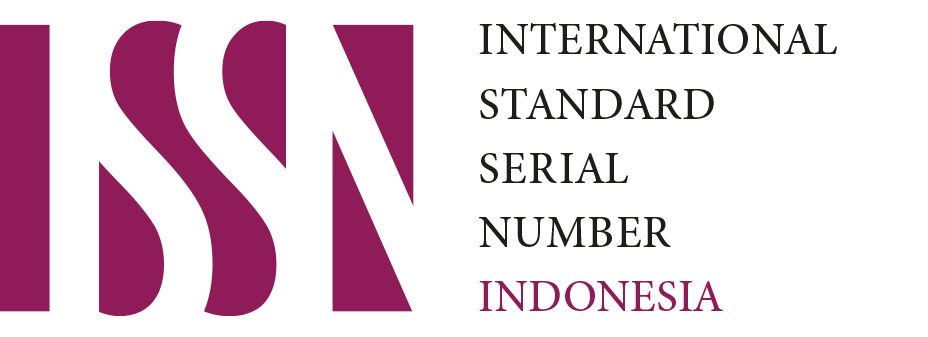Quality assurance and its impact from higher education institutions' perspectives
Sequential Explanatory Strategies for Alumni
Unduhan
Background of the study: The implementation of quality assurance at Morotai Pacific University does not improve and improve the quality of higher education implementation in the Border Area of Morotai Island Regency. This is evidenced by until now the University of the Pacific Morotai does not have university accreditation.
Purpose: This research aims to find objective, accountable evidence in helping universities make improvements in developing quality universities and improve strategies in carrying out quality assurance at the college.
Method: This research uses mixed methods with sequential explanatory strategies implemented of alumni at the Morotai Pacific University of North Maluku as the Border Region of the Republic of Indonesia.
Findings: The results showed that there are still many graduates of pacific morotai universities who do not have a job, and are looking for work. While the perspective of alumni on ability in the academic field is focused on aspects of graduates who have special competencies, general competence, personality competence, and infrastructure. The addition of teaching staff is also one of the concerns of alumni to meet the ratio of lecturers to students.
Conclusion: This article defines the essence of the parameters and dimensions of quality assurance of universities in Indonesia, especially at the Morotai Pacific University in North Maluku through the application of quality assurance models.
Unduhan
Amaral, A., & Joao, M. R. (2010). Recent Trends in Quality Assurance. Quality in Higher Education, 16(1), 59-61, DOI: 10.1080/13538321003679515
Andrei, S. B. et al. (2015) Quality assurance and its impact from higher education institutions' perspectives: methodological approaches, experiences, and expectations. Quality in Higher Education, 21(3), 343-371, DOI: 10.1080/13538322.2015.111254676
Brendan J. Gray, Kim Shyan, & Violeta A. L. (2003). Branding universities in Asian markets. Journal of Product & Brand Management, 12(2), 108 – 120. Doi.org/10.1108/1061042031046979
Brown, D. J & Koenig, H. F. (1993). Applying Total Quality Management to Business Education. Journal of Education for Business, 68(6), 325-329. DOI: 10.1080/08832323.1993.1011763
Chanphirun, S. & Dahles, H. (2015). Stakeholder involvement in the higher education sector in Cambodia. Studies in Higher Education. doi.org/10.1080/03075079.2015.1124851
Creswell, J.W. (2009). Research Design Qualitative, Quantitative, Mixed Method Approaches. London: SAGE
Cruickshank, M. (2003). Total Quality Management in the higher education sector: A literature review from an international and Australian perspective, Total Quality Management & Business Excellence, 14(10), 1159-1167: Doi.org/10.1080/1478336032000107717
Dirkse, S., & Rigard, J. S. (2020) A total quality service framework for private higher education in South Africa. Quality Management Journal, 27(2), 106-119, DOI: 10.1080/10686967.2020.1722044
Don Houston. (2007) TQM and Higher Education: A Critical Systems Perspective on Fitness for Purpose. Quality in Higher Education, 13(1), 3-17, DOI: 10.1080/13538320701272672
Mariusa, C. L., Danielab, C. and Lilianac, L. (2014). uality Management in Projects - Quality Planning. Applied Mechanics and Materials 657, 891-895. Doi:10.4028/www.scientific.net/AMM.657.891
Elassy, N. (2014). The concepts of quality, quality assurance and quality enhancement. Quality Assurance in Education, 23(3). 250-261
Ewell, P. (2010). Twenty Years of Quality Assurance in Higher Education: What's Happened and What's Different? Quality in Higher Education, 16(2).
Habtoor, N. (2015). Influence of human factors on organisational performance Quality improvement practices as a mediator variable. International Journal of Productivity and Performance Management, 65(4), 2016. 460-484
Ian Tudor. (2007). Teacher training and ‘quality' in higher education language teaching: strategies and options. European Journal of Teacher Education. 29(4), 519–532
Jagdeep, S. (2015). Continuous improvement philosophy – literature review and directions. Benchmarking: An International Journal, 22(1),75 – 119
Kehdinga, G.M. (2016). Deconstructing quality in South African higher education. Quality Assurance in Education, Doi.org/10.1108/QAE-11-2016-0072
Lee Harvey. (2006). Impact of Quality Assurance: Overview of a discussion between representatives of external quality assurance agencies. Quality in Higher Education, 12(3).
Manatosab. M. J., et al. (2015). The integration of quality management in higher education institutions: a systematic literature review. Total Quality Management. Doi.org/10.1080/14783363.2015.1050180
Michael, R. K. & Motwani, S. J. (1997). A comprehensive model for implementing total quality management in higher education. Benchmarking for Quality Management & Technology, 4(2), 104 - 120: Doi.org/10.1108/14635779710174945
Nasser, A. G. A. and Abdallah M. O. (2020). The effect of total quality management practices on employee performance: The moderating role of knowledge sharing. Management Science Letters. doi: 10.5267/j.msl.2019.8.014
Odhiambo, G. O (2014): Quality assurance for public higher education: context, strategies, and challenges in Kenya. Higher Education Research & Development, DOI: 10.1080/07294360.2014.890578
Pedoman Penjaminan Mutu. (2018). Jakarta: Kementrian Pendidikan Tinggi.
Per Olaf, A., et al. (2016). Learning outcomes – a useful tool in quality assurance? Views from academic staff, Studies in Higher Education, DOI: 10.1080/03075079.2016.1185776
Ramirez, G. B. (2015) Translating quality in higher education: US approaches to accreditation of institutions from around the world. Assessment & Evaluation in Higher Education, 40(7), 943-957, DOI: 10.1080/02602938.2014.960361
Seyfried, M. (2019) Undisclosed desires: quality managers' normative notions regarding the implementation of quality management. Assessment & Evaluation in Higher Education, 44(7), 1106-1119, DOI: 10.1080/02602938.2019.1573970
Stalmeijer, R. et al. (2016) Strengthening internal quality assurance processes: facilitating student evaluation committees to contribute. Assessment & Evaluation in Higher Education, 41(1), 53-66, DOI: 10.1080/02602938.2014.976760
Vincent C. L. and Kleiner, B. H. (2001). Global Trends in Managing Innovation and Quality. Jurnal Management Research News 24(3/4).
Hak Cipta (c) 2022 Irawati Sabban, Irfan Hi. Abd Rahman

Artikel ini berlisensiCreative Commons Attribution-ShareAlike 4.0 International License.
Record and Library Journal by Unair is licensed under a Creative Commons Attribution-ShareAlike 4.0 International License.
1. The journal allows the author to hold the copyright of the article without restrictions.
2. The journal allows the author(s) to retain publishing rights without restrictions
3. The legal formal aspect of journal publication accessibility refers to Creative Commons Attribution Share-Alike (CC BY-SA).
4. The Creative Commons Attribution Share-Alike (CC BY-SA) license allows re-distribution and re-use of a licensed work on the conditions that the creator is appropriately credited and that any derivative work is made available under "the same, similar or a compatible license”. Other than the conditions mentioned above, the editorial board is not responsible for copyright violation.


 57201398420
57201398420

























